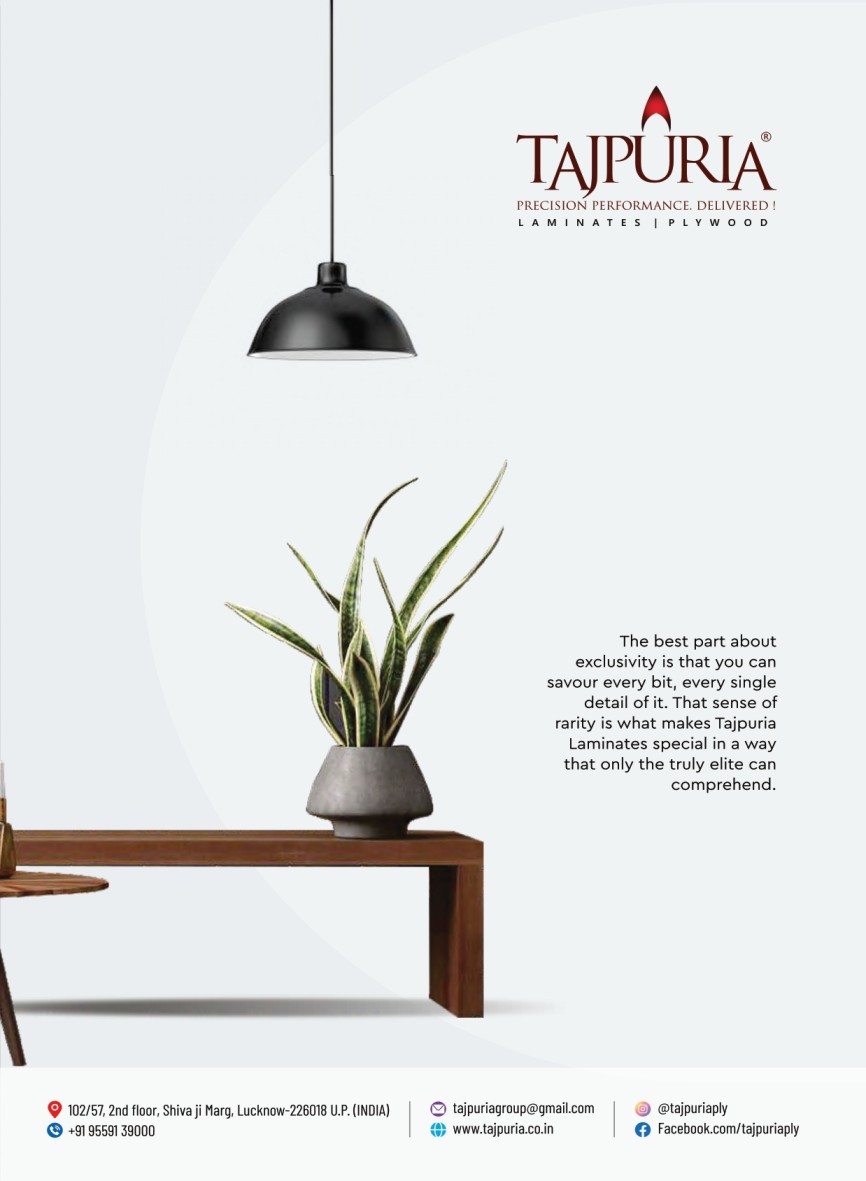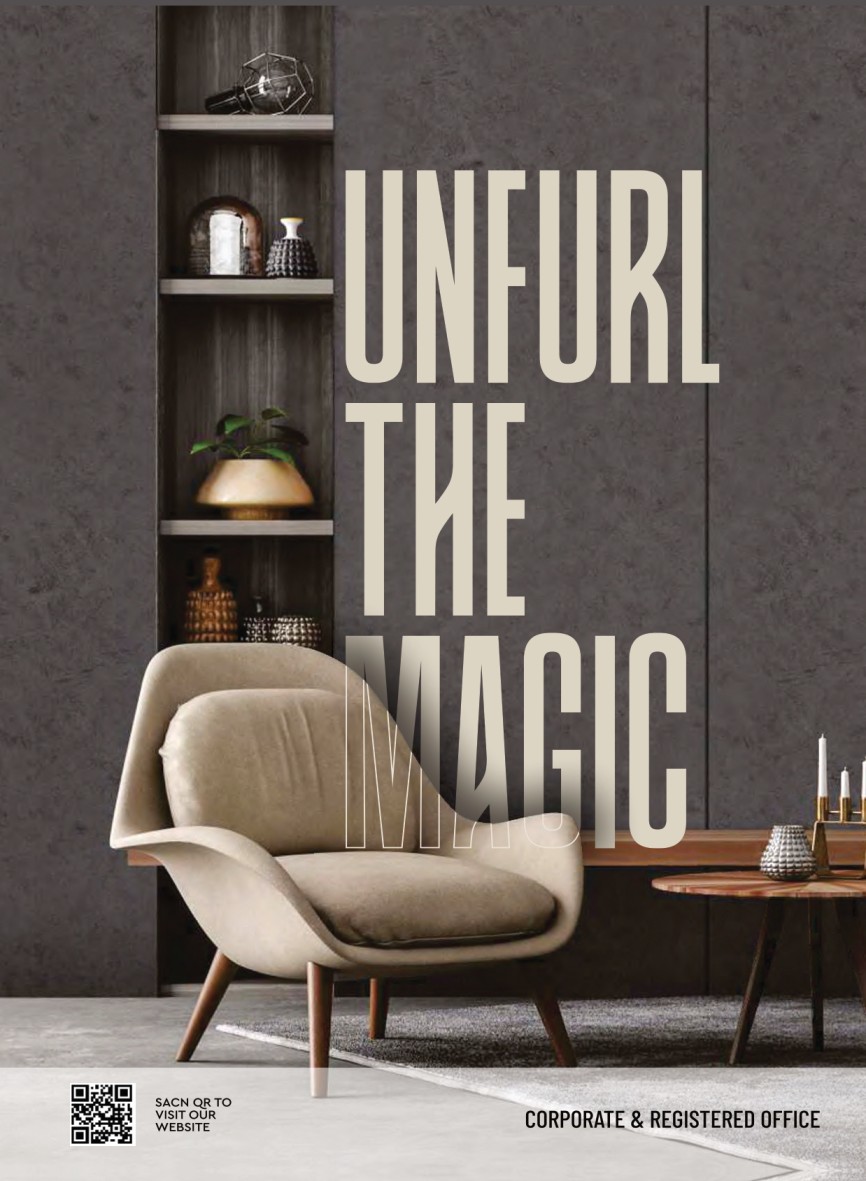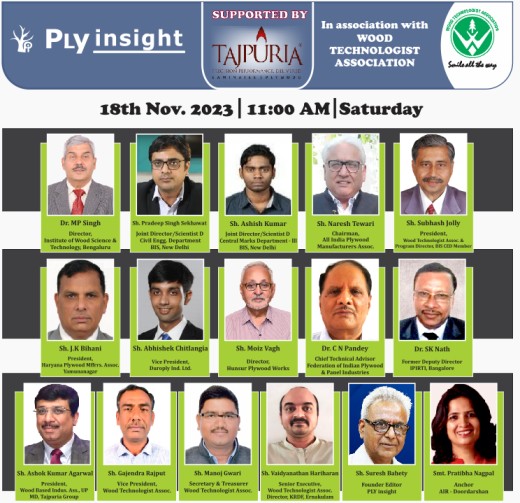
BIS QCO Norms for Plywood Industries: Challenges and Opportunities
- December 14, 2023
- 0
Dr. M P Singh:
- Industry has to improve quality and manufacturing standards.
- Technical Committee always tries to accommodate real world aspects into quality norms. It is not working in an utopian world. Whatever quality is currently being achieved in the market, is only being decided upon.
- Let the industry itself sit together and decide under which category/standard the sub-standard products may be brought under.
- We may also bring standardization parameters for BIS reject/non-conforming products, and let the consumer also understand things. Because, only if we can bring optimum raw material (RM) utilization, we can ensure complete life cycle.
- Products have to be sold based on standards only, in future. Additional standards for non-conforming products may be thought of based on the recommendations and proposal to the Technical Committee.
- Let us not think about problems only, let us discuss solutions.

BIS Dr. Pradeep Singh Sekhawat:
- We work along with the industry. However, consumer interests remain supreme.
- Let the industry suggest a standard for the sub-standard products, rather than calling it by different names. We can sit together and create a solution with positive approach which is solution-based, not problem-based.
- As Dr M P Singh Sir mentioned, products like Marine Ply should be under specific category only.
- We have to think forward and work positively towards implementation of standards.
- Let every association form a standardization cell to represent the matter. We can also provide free training on standards. Let industry approach us with solutions also, along with problems. We do not have any kind of bifurcation like small or big. We take individual communications also, into the committee meeting.
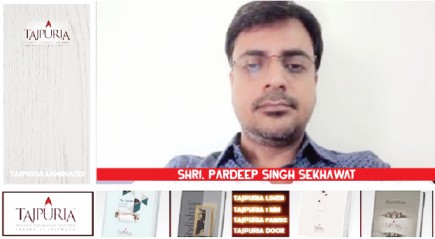
BIS Dr. Ashish Kumar CMD-III:
- The Central Marks Dept III (CMD-III) looks at implementation of standards under CED-20.
- I would like to clarify that BIS does not make standards by itself. All stakeholders including regulatory bodies come to the BIS platform and then make the standards.
- It is the stakeholders who have to come up with requirements and issues. It is a dynamic process, and amendments are made effective based on the necessities of all stakeholders.
- CMD-III looks into implementation of policy, regarding documentations, lab infrastructure requirements etc.
- The QCO has been published and hosted only after detailed stakeholder consultations. Whatever standards related issues remain, they will be taken up, and it is always the responsibility of manufacturers to raise them. They have to take the initiatives.
- For ease of doing business (EODB), Cluster Based Testing Facility (CBTF) is an initiative from BIS for such manufacturers under MSME who cannot allocate funds & take up the cost burden. About marking fees also, further representations can be made.
- It is a dynamic process to develop quality ecosystem for the country.
- Due to the flooding of markets with sub-standard domestic and import products, QCO has become a basic necessity for consumers and users.
Sh. Naresh Tewari:
- MSME is in fear. How to remove their fear?
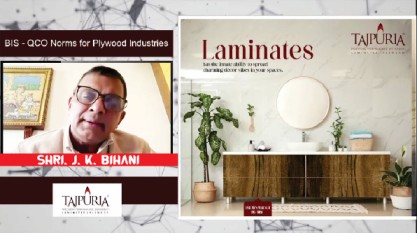
Shri. J. K. Bihani:
- When a product fails twice in BIS testing, Stop Marking is initiated. Factories will have to shut down because un-marked materials cannot be sold. One suggestion, if found feasible is, like the points system followed by CIRT, ARAI. Some of the non-critical aspects like straightness, measurement etc can be made into points-based system. And if a sample passes 90-95% points, it should be regarded as pass, and corrective actions may be instructed to the factory, since it is not a medically essential product.
- CED-20 committee did not probably represent the small industries properly. Fees reduction should be for small industry also, not only micro.
- The criteria for individual batch testing will be difficult for small factories, more so if the CBTF is chosen.
- QCO is good for the country. We welcome it. But care must be taken that it should not become a reason for loss in MSME economy, jobs & wages.
Shri. Pardeep Singh Sekhawat:
- We remember sending more than 10 communications to NIPMA. There were no responses. Please represent as HPMA, we would be happy to welcome you into the committee.
- Approving of samples conforming 90-95% of requirements is a policy issue. You can represent this to the CMD-I, which is in-charge of policy norms and changes.
- We are working with manufacturer stakeholders and accommodating various requests from our side. For example, we have added negative (-) tolerance due to representations from stakeholders. So, you can cite examples of critical & non-critical points, and probably we could think of ‘re-designing’ the standards to accommodate these aspects. These have to done as policy changes through CMD-I & III as well. Another example is, we have tried to accommodate changes such as doing away with MoR, MoE requirements for 6mm plywood. Currently we are trying our best to accommodate such changes based on practicalities presented by stakeholders.
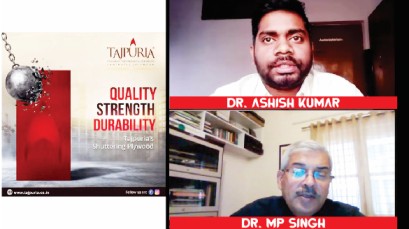
Shri. Ashish Kumar:
- In order to remove the fear of manufacturers, we must understand 3 things – why the QCO was brought? How it will be implemented? What will happen after implementation?
- Why QCO was brought? – QCO was brought in because of earlier mentioned reasons of too much dumping of substandard products in domestic markets, locally as well as through imports. So, regulators felt the necessity to facilitate consumers to buy standard products.
- One important necessity was to encourage those who were making standard products but are being discouraged by majority of non-standard producers who spoilt the market. We need to encourage everyone to make quality products, and provide level playing field in the market.
- How the QCO will be implemented?–Applicants will get license in 30 days which is guaranteed. Our DG follows up on a daily basis. We also contact manufacturers and advise them on what to improve, in order to facilitate quick license procedure.
- Manufacturers should not only concern themselves with sales and profits, they should look into quality as well. Issues will be there, but we need to continue the process of standardization and regularization. We are continuously working on mechanisms for the benefit of all.
- What will happen after implementation? – Manufacturers must realize that they are producers of one product, but they are also consumers of 100s of products. So, it is necessary to remain quality oriented for our country’s benefit and it is a need of the hour. We are also working on critical & non-critical parameters. Industry can bring in proposals.
- Fees reduction is applicable to MSMEs, not only micro enterprises including cluster labs.
- Cluster lab capacity (number of factories etc.) is a matter of analyzing and deciding by the industry itself. Additional proposals are welcome.
Dr. MP Singh:
- CFC (Common Facility Centre) scheme can be thought of for cluster labs.\
Shri. Pardeep Singh Sekhawat:
- CFC is a matter of MSME ministry. However, BIS is okay with the scheme.
- All recommendations have to be evidence-based. Then only committee can look into them effectively. Based on evidences from IWST, we have already reduced some values by around 10-15%.
Shri. JK Bihani:
- Indentation clause of 0.2mm to be revisited because majority of industry uses soft wood.
Shri. Pardeep Singh Sekhawat:
- Upon physical inspection, users will say it is having defect, and will be rejected by them. In this sense, it will not be possible to be taken up.
Dr. MP Singh:
- Let the BIS organize camps and take applications from manufacturers. We can support manufacturers to improve quality & obtain licenses. Let them be made to join first. Let us re-visit the system of having to prove the product first before licensing, since anyway standard compliance has become mandatory now. And we will support them to improve quality.
Shri. Pardeep Singh Sekhawat:
- I request that this suggestion is made into a communication, based on this platform. It is a policy matter. So, if a communication goes, then we can discuss accordingly and take it up.
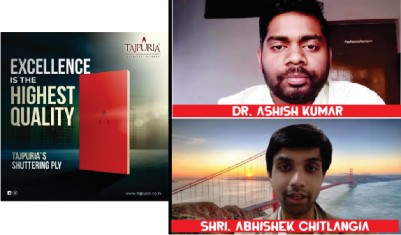
Shri. Abhishek Chitlangia:
- Sufficient time has been given to the industry. Advance notice has been given. Published norms are available.
- There are a lot of consultants for all types of norms who support & guide.
- Industry already has systems to be followed for environment, PF, ESI, ISO and many other norms which have become mandatory. It is not that much of a difficulty if the industry puts required effort.
- As industrialists, we have purchased land, developed sheds, installed machinery and learnt everything ourselves. We are inherently learners.
Dr. MP Singh:
- Hand-holding is necessary for small industry. MSME cannot be compared with Corporates. Everyone’s mindset is not similar. So, we need to engage with everyone.
- Create a process of initiation first, then we shall look into capacity-building and testing.
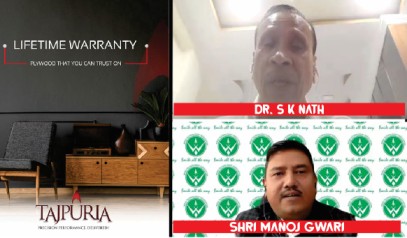
Dr. S K Nath:
- Industry has put lot of effort on manufacturing, marketing and sales. But not on quality and quality personnel.
- For 3,500 factories, trained technical people from IPIRTI-IWST are only around 600-700.
- BIS is a very proactive organization. BIS helps the industry to provide quality products & services to consumers. So, everyone should come into the same platform, including trained technical personnel and training institutes.
- There is no need to fear at all. Training will help people learn. And if one factory can make quality material, everybody can make it. It is possible.
Shri Manoj Gwari:
- The ‘fear’ word which is frequently used, is misguided. Also, treating BIS as a department is wrong.
- BIS functioning is simple. It is a platform for all activity to be brought under specific standardization process. And, they do it with suggestions from the stakeholders themselves.
- BIS keeps sending communications and emails. Most of the time we do not even go through them.
- Having experience in these processes as a consultant since many years, I have always been able to observe this communication gap. And the industry gets kind of trapped, without initially providing appropriate suggestions at the right time.
- Industry has to consistently engage with BIS.
- Today, we have 4 years harvested wood. Also, our industry is competing with the likes of MDF, HDHMR, WPC etc. Industry needs to sit on this matter and avoid false propaganda such as 20-25 years guarantees, and needs to work out practical standards, given the currently available resources & possibilities.
- Also, I wish to state to Shri Sekhawat that today, if you take samples from different regions of an 8’x4′ sheet and test, you would most probably obtain different results. We get very less percentage of A grade core veneer these days. And, if someone sells these products for 40-50 rupees, either he does not know costing, or he will never be able to make at this rate.
Shri. Vaidyanathan:
- There is a definite need for mindset change, and industry has to evolve its ways in order to maintain quality consistently.
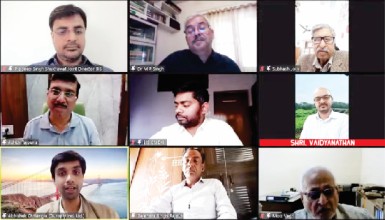
Dr. SK Nath:
- BIS already has a working committee. They have collected market samples, worked with IWST & arrived at practical values. They are not arbitrary.
- Resins have to be improved for quality as well as emissions.
- The one pending matter is related to preservative treatments. Most industries do GLT (glue line treatment) and veneer dip treatments. But the 12Kg retention for Marine Grade (710) has not been achievable consistently yet. What industry does, and what BIS wants, there is a gap. Through discussion and through experimentation, we need to get around this as a common platform for agreement.
- All the non-critical points such as flatness, thickness, size & related tolerances, BIS has always been accommodative & listened to more than 100s of representations and hours of meetings multiple times. Every point has been discussed at length and there is no need to fear.
- The only pending issue remains preservative retention as I have seen that industry is able to achieve only 2 to 2.5% retention through the current process of dipping. I have found that the current GLT practices and veneer dipping are better than previous sheet dipping practices. This has become a fool-proof method, easy to implement and an on-line process.
- Along with industry, technicians, technical laboratories and BIS have to come together and decide. Time limit also may be decided by the stakeholders together.
Shri. Vaidyanathan:
- Regarding preservative treatments, formulations of standard international chemical corporations such as FMC & Bayer may be safely used, as well as the use of SPCP. These are practiced worldwide, and are well researched, well-established scientifically.
Shri. Pardeep Singh Sekhawat:
- GLT for BWP 303 has been included in recent amendments and would be published soon.
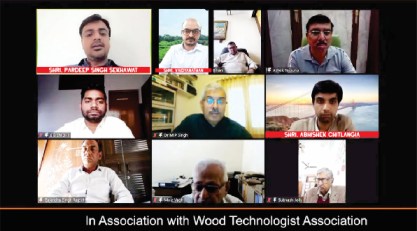
Shri. Abhishek Chitlangia:
- We need to see consumer interests. They buy sheets out of trust. They make homes out of hard-earned savings. It may not be an essential product, but from a consumer point of view, buying low quality product is like falling for a chit-fund scam. Their hard-earned money is at stake. Their financial health is at stake. It is our responsibility to provide quality products.
- Customers should be able to buy quality-labelled products. We cannot say, just put everything under a grade and buy any product. Even labeling a plywood as packing grade and selling for 30 rupees helps the consumer to finally take an informed purchase decision.
- Also, consumers have got so used to 710 that everyone thinks 710 is the best plywood available. It would require tremendous effort to change the consumer mind away from 710 because it has become a ‘default’ norm. Converting architects and project users from 710 to 303 BWP is going to be a huge task, which would take lot of resources and efforts. Why not make 710 as commercial, and bring a new specification like 711 for example, for Marine?
Shri. Pardeep Singh Sekhawat:
- Some things become wrongly promoted due to market practice. Changing these wrong practices using regulations will become a negative effect. It is better to undertake reverse process of awareness creation of BWP grade.
- It is the industry which has to create BWP awareness with responsibility.
- One is the financial aspect of business. Other is the ethics. Both should go hand-in-hand, if our nation has to get into quality awareness and consciousness. It should be our joint venture to create awareness about BWP, not 710 or 303.
- Just like Dr. Nath mentioned, I regard it as a crime, whoever suggests real 710 for interiors. It is actually a crime for having started the trend of suggesting 710 for interiors, and creating this situation.
- Once the latest amendments are published, 90% of questions and doubts will be solved automatically.
- It is customers’ right to choose appropriate products. Industry cannot hide the right of knowing, from the consumer. Through standards and marking clause etc., it is the industry’s responsibility to communicate and the customers’ right make an informed choice, whatsoever.
- For example in furniture, take the decorative table and a normal centre table. Both may be used as centre table. However, it is a responsibility of the manufacturer and a right to the user that I should know that it is a decorative table, and he should not stand on it or put a load on it because it is for decorative purpose. Consumer should be able to clearly decide whether or not they need to buy a particular product.
Shri. Vaidyanathan:
- We can think of a ‘Utility Grade’ label as in the international market, which is a refined way of labeling/presenting it as a lower quality product.
Dr. SK Nath:
- About cluster laboratory: In every production line, on-line testing is a must. Every factory must have testing laboratory. You cannot avoid it. Only then a factory can maintain quality.
Shri. Ashish Kumar:
- Ideally, requirement of own laboratory in order to test and verify all the parameters is mandatory. But the cluster facility has been provided as a relaxation to avoid financial burden for small factories. However, it is the individual factory’s responsibility to ensure process of continuous testing.
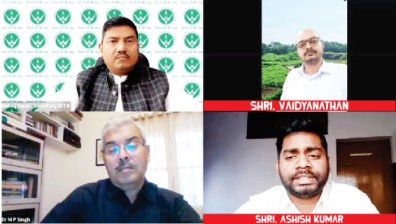
Shri. Ashok Agarwal:
- As a patriot, I fully support the standards initiatives. It is a matter of great pride to make 100% standard products. Overseas importers would also be happy to buy products from India.
- However, being associated with a lot of very small units/factories in and around Lucknow, there are certain practicalities that must be addressed. It is very important to know this problem deeply. We are trying to ‘graduate’ many units that do not even know what norms mean, or what BIS is. 99% of industries are not aware as to what are the norms. Reason is because we have norms that keep getting amended continuously. After sometime, people lose track of what is happening, and lose track of what are the actual norms.
- I request stakeholders to do away with the cut-off dates and first finalise the norms once for all, saying you have to make as per these final norms only.
- 95% of our industry makes only 5 products, out of which the 3 main ones are 303. 1659, & 2202, apart from 710 & 4990. Many factories make only 303. The other 5% of factories have crossed all these ‘graduations’ and gone into ‘post-graduation’.
- My request is that once the cut-off dates are reached, minimum 6 months should be provided to manufacturers in order to procure proper, reliable equipment for testing. Procurement of quality testing equipment requires sufficient time for the entire industry, as there is going to be a sudden surge in demand. There is a possibility that we may be supplied low quality, below-par equipment by suppliers in order to cater to sudden surge in demand. And again, the industry itself will be in trouble.
- Another major crisis is that of trained manpower. The sector needs at least 10,000 trained people to implement and maintain all these standards. Before commencing standards implementation, it must be the responsibility of institutes and agencies to prepare the manpower needed, so as to enable successful implementation. Otherwise, there will be panic. And the small amount of manpower currently available may start blackmailing & seeking more money.
- Due to many practical difficulties, many small players have gone to the extent of closing down their factories which will create huge job losses and economy losses.
- Implementation of standards should not become a threat to the very existence of small factories. We do not want to demoralize anyone. But everyone should be considered equally. Efforts and struggles of people should not go wasted. We need more time. If implemented in a hurried way, norms may not be met, and there is good reason to believe that these norms will only be on paper. Time is needed to implement.
- I am not talking for myself. By God’s grace I have the capability and resources to comply with all such norms, as we already manufacture high quality plywood. I hold 12 licenses. But I speak on behalf of 100s of small & micro players who have put all their money and efforts into small enterprises.
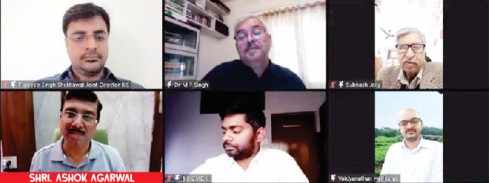
Dr. MP Singh:
- Ashokji’s words are valid, but industry has to build capacity. Either these owners have to learn & train their staff, or send their employees for training. IWST is always ready to hand-hold everyone for capacity-building and standards.
Dr. SK Nath:
- Industry is not like business, like buying and selling goods for profit. Industry is not like that. Industry needs technology. This cannot be avoided. There are a lot of technology parameters needed.
- Small or big, industry needs appropriate infrastructure. Industry is a technique for converting raw material into product, with proper technology. And technology is handled by a technologist.

Shri. Vaidyanathan:
- Lot of people always talk about ‘practicality’. We must understand that within the so-called ground level practicality also, there have to be some basic parameters that need to be ensured. Without basic parameters and SOP, there cannot be any practicality.
- Being a person who has always tried to work life-long for the small players, and being available for them, I have consistently tried to make the small factories realise that consistency in basic parameters alone, is going to help them remain practical. There is absolutely no way to escape basic SOPs in manufacturing.
Shri. Moiz Vagh:
- We do require BIS standards very much, and it has to be done.
- However, it is very important to understand the way it is going to be implemented.
- Do we have the entire list of factories manufacturing plywood products? We observe that only around 850 are licensed with BIS. We need to understand how many are micro, small etc.
- We do not have the raw material (RM) resources to make the quality which is being discussed about. Some of the RM which is available at the moment does not permit us to manufacture the discussed quality of products. For example, we are talking about 710 all the time. We do not have RM to produce this standard at all. In my view, 710 is abused, and not really being used at all.
- Because of the RM situation at the moment, we are forced to manufacture sub-standard products, with available timber girth reaching 12” these days. That is our problem at the moment, just as Dr. Nath pointed out that we are using immature timber.
- In future also, it is very important to understand what is the kind of RM we are going to get in order to make as per standards.
- Another point is – in special applications such as for example, special decorative plywood – there are various products which are specifically made as per customer demands/requirements that may not be as per standards, or standards may not have been covered/considered in such cases. Where are we going to place them? This is what I want to find out.
- Some of the problems realistically put forward by Shri Ashok AgarwalJi are very relevant, and I think that they have to be looked into.

Dr. SK Nath:
- One of the biggest challenges to BIS in coming days is going to be the speed and methodology of implementing the QCO norms. If there are around 3,500 factories existing as being discussed everywhere, then how BIS is going to implement the licenses & enable standardization within the span of time, remains to be seen.
- And the biggest technical issue for BIS, & business issue for the manufacturers will be handling of non-conforming lots. What happens to these products and who will buy them?
- Once the consumers become aware of norms and their rights, how to solve this issue? How will BIS solve the matter before commencement dates of the QCO? Technical issues can be discussed and solutions brought out.
- Once all these matters are solved, tomorrow, our country will be a proud maker of 100% standard plywood products. Industries will definitely try to export more, as importers overseas will gain more confidence that our industry produces every board in quality.
Dr. MP Singh:
- Alternative products in the same segments, such as WPC and others may become competition for plywood. Related, but unsustainable products might pose a challenge to plywood. These products should also be looked into for compulsory standardization.
- It should not be that we impose compulsory QC norms for one product, and competing, related products in the market become a challenge to a standardized product.

Shri. Vaidyanathan:
- PVC Foam boards are being dumped in Kerala markets under false naming in the style of wood/timber, such as ‘Wud’ – like BestWud, DenWud, TruWud etc., which are unethical practices as well as misleading marketing techniques.
Dr. MP Singh:
- Industry should represent this aspect that they must not name it in the name and style of ‘wood’ and ‘timber’. Where there may not even be 10% wood involved, they call it WPC. So, there should be some norm for this, because its use is similar.
- Otherwise, it will become a set-back that we indirectly promote non-renewable resources in place of renewable resources. Those products are not environmentally sustainable.
Shri. Gajendra Rajput:
- Standards were earlier made based on hard-wood availability. For example, the indentation of 0.2mm clause as discussed by Bihaniji also. Pradeepji said it is based on consumer interests. If all consumer interests are catered to, then how can we accommodate manufacturer interests also, based on our raw material availability?
- Changes need to be made based on these situations and we cannot avoid changes required by the industry. It is not like testing lab-made products under ideal conditions by selecting the best materials.
- Until now, there is no finalization on the values of MoR, MoE etc. Our deadlines are fast approaching. That is why industry is in fear. Ashok Agarwal rightly pointed out ground realities of small factories.
- Most industries other than the top 8-10 players do not even know about proper resin-making. Consultants, one after the other, keep coming and suggesting cost-cutting and new methods. They keep tinkering. Resins do not have their norms about raw material ratios and how to use them etc. These also have to be included in standards clearly, so that industry’s fear is removed.

Shri. Pardeep Singh Sekhawat:
- Only problem I am able to observe after discussing last 2 hours is communication gap. BIS has been proactive in addressing this. All our branch offices are easily accessible to everyone. We have even started working during weekends. Those days of Saturdays and Sundays are gone.
- IS: 848 has all the parameters regarding performance of resins. We cannot put in place individual formulations and resin parameters, because we do not want to obstruct industry innovations.
Shri. Vaidyanathan:
- Every 6 months, resin technologies and techniques are changing worldwide. We cannot stipulate individual resin parameters into a standard.
- There are resins with as low as 18% solids content which can pass our BWP 303 norms effortlessly. There are factories in India itself, that use more than 20 different formulations.
- Need of the hour is SOPs for resin and glue making.
Dr. MP Singh:
- Make SOPs for widely used resins. Making standards parameters for individual resins is not logical.
Shri. Ashok Agarwal:
- Request to provide SOPs. It will be beneficial for the whole of small industries/factories.
Dr. MP Singh:
- It is the product which is standardized. We should not get into other things. Testing is for the product.
- I give responsibility to Vaidyanathan to compile a presentation on the 3 standards, and do a meeting on this.













